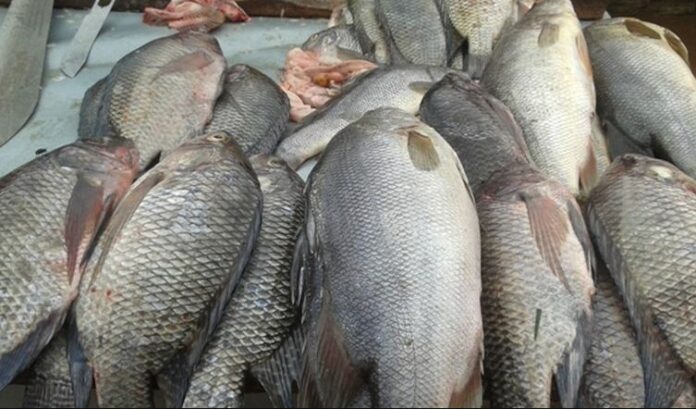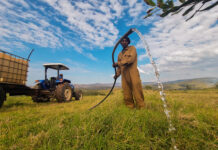As the oceans go, so do we. World Fisheries Day is celebrated on November 21 every year and aims to draw attention to overfishing, habitat destruction and other serious threats to the sustainability of marine and freshwater resources, and the global ecology.
The seafood industry is reaching new heights in every part of the world in terms of consumption, simultaneously as both a leading current food source and ironically a sewer for humanity and human industry. According to the Food and Agriculture Organization the world fish market is projected to produce 191.4 tonnes of live weight in 2024, a margin which grows by several million tonnes year upon year.
The global seafood market size was USD 358.68 billion in 2023 and is projected to grow from USD 386.73 billion in 2024 to USD 837.17 billion by 2032, with a Compound Annual Growth Rate of 10.14 percent. Asia Pacific dominated the seafood market with a market share of 43.66 percent in 2023. As the reliance on seafood shows little sign of decline, overfishing and the resulting aquatic habitat destruction places more than half of the world’s marine species on the brink of extinction by 2100. This is according to the United Nations, who launched their Decade of Ocean Science for Sustainable Development and the Decade on Ecosystem Restoration in 2021,to support and advance the realisation of their 2030 Sustainable Development Agenda. The fact is that the ocean produces half of the oxygen we breathe and damage to this life-sustaining ecology, exacted throughout by commercial fishing processes and pollution, is an existential threat to civilisation.
With global fish stocks rapidly depleting, farmed fish has been framed as the future of the industry, however a new study suggests that the actual impact of aquaculture undermines the widely held belief that it can be part of a sustainable food system. This research finds that the ratio of wild fish inputs to farmed fish outputs, which means the weight of wild-caught fishes killed and fed to farmed ones, is between 27 percent and a massive 307 percent higher than previous estimates. In particular, protein output from carnivorous species such as trout and salmon is thought to require more than twice the input from wild fishes. Today approximately 70 percent of salmon produced worldwide is farmed. This highlights the unsustainability of popular carnivorous fish species in the same manner in which terrestrial farming of carnivorous mammals for commercial consumption is not sustainable.
For the study, the researchers noted several previously overlooked sources of wild-caught fishes in aquaculture feed. They also incorporated data on collateral fishing mortality – known as “by-catch” – which includes seabirds, turtles, marine mammals such as dolphins, and invertebrates as well as wild fishes. According to the UK’s Sea Fish Industry Authority, aquaculture is the fastest-growing food supply sector in the world, expanding more than 600 percent between 1990 and 2020. Fish farming also comes with a host of issues such as illnesses that can infect surrounding populations. Aquaculture overpopulation is dealt with by administering large quantities of antibiotics – which is another health concern that continues to worry medical professionals around the world. Fish are packed together in small areas and densely concentrated which can result in rapid water pollution.
The farming of fishes has become a billion-dollar industry, and aquaculture alone is responsible for about half of all fishes consumed by humans of around 1.5 trillion individual animals per year. This also means aquaculture is complicit in many of the same injustices – disease, cruelty, starvation, and death – rife in the farming of terrestrial animals. The authors of the new study note that more research is needed to get a true picture of the industry’s impact on the environment and biodiversity. Concluding, they suggest that all directives to “expand this sector on sustainability grounds should be reconsidered.”
Fish consumption is promoted as a good source of omega-3 fats, which are unsaturated and anti-inflammatory, making them beneficial for heart and brain health. Fish is also regularly touted as a cleaner and healthier protein source compared to red meat, when in fact fish consumption is a leading dietary source of dangerous contaminants. Mercury is a toxic heavy metal and a concern related to fish consumption. A study by the Biodiversity Research Institute in Maine found that as much as 84 percent of the world’s fish contain unsafe levels of this deleterious element. Various pollutants accumulate in fish and shellfish and these have been linked to poor brain development, liver and immune system damage, even skin cancer, according to a study published in the journal Cancer Causes and Control. These substances are highly problematic because they are not readily expelled from the body and even short-term exposure can carry lifetime consequences. Given that the nutrients offered by eating fish can be obtained from other food sources, it might be time to question whether fish should be considered a healthy food source at all. The research seems clear that it’s time for consumers who have other options to examine whether eating fish is worth the risk.
High levels of fat, and cholesterol along with a lack of fibre make fish a poor dietary choice for health reasons alone. Obtaining omega-3 from algae or seaweed (which is where the fish get it in the first place) might be a healthier option, and so too eating chia seeds, flax seeds and walnuts, among other examples. Omega-3 can also be taken in supplement form.
In South Africa, recent instances of food fraud and contamination around fish products have been spotlighted as on Tuesday 12 November the South African Police Service revealed that crime intelligence officers had raided a facility in Gauteng the previous day, during which they seized a large quantity of counterfeit pilchards and printing equipment used to alter expiration dates. Charges were laid for food safety violations. Approximately 50,000 cases of marine food poisoning are reported worldwide annually, but because the disease is underrecognized and underreported, reports are likely grossly underestimated. This is especially salient in South Africa on World Fisheries Day as the National Disaster Management Centre has just declared foodborne illnesses a national disaster, which over the last few weeks alone has allegedly claimed the lives of at least 22 children countrywide.
While protein content remains the main virtue publicised in marine product marketing, the health and environmental impacts are considerably high. Protein diversification with an emphasis on plant-based agriculture is an important lever to reduce impacts and deliver long-term economic, social and environmental advantages. Further support is needed from governments to accelerate protein diversification for the benefit of our communities and the planet. ProVeg shares more data on the hidden costs of our food system here.








